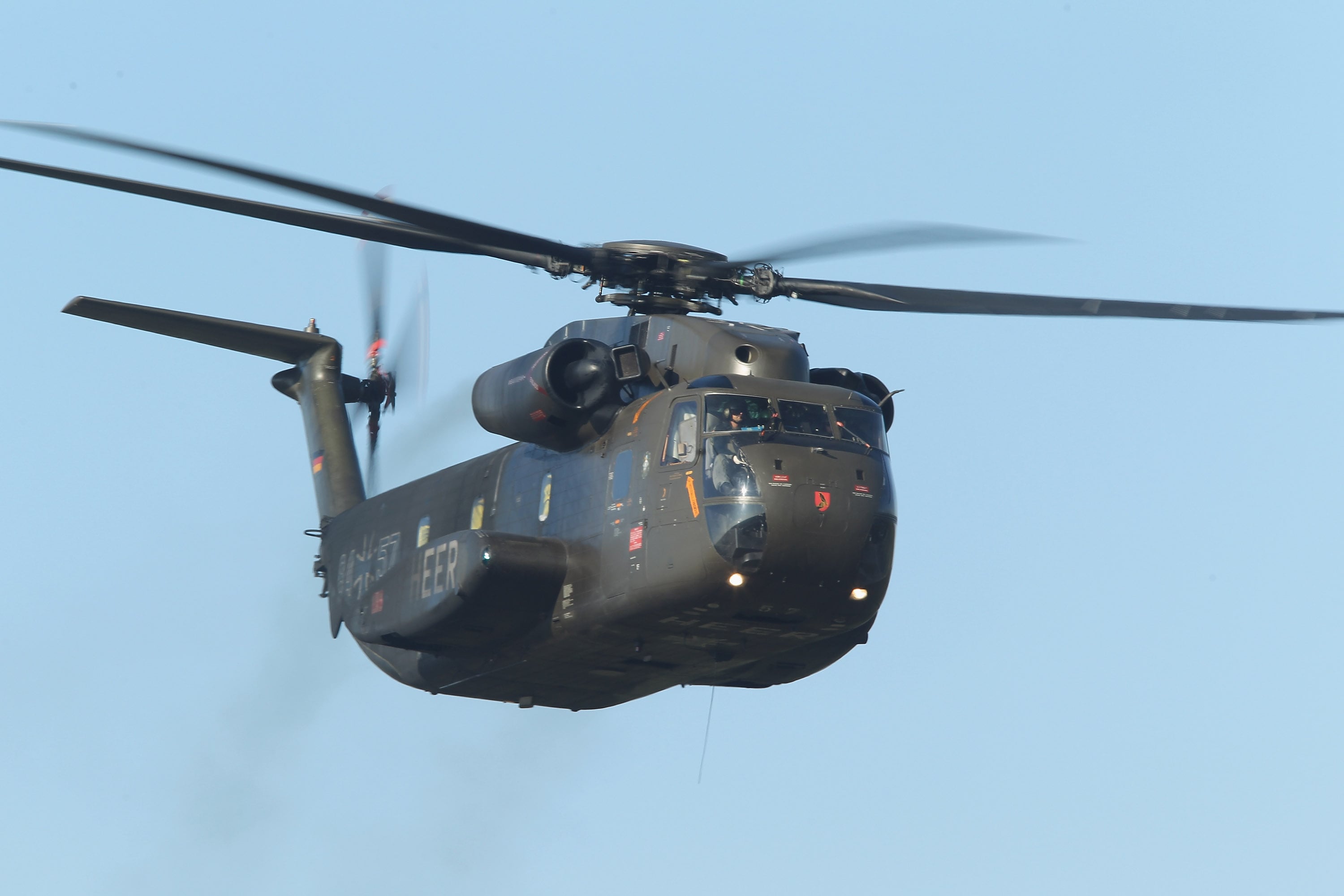On Dec. 18, Bloomberg reported that Pentagon officials are considering reducing the number of Marine Corps CH-53K King Stallion heavy-lift helicopters and replacing them with modified Army CH-47F Chinook medium-lift helicopters. In doing so, the Pentagon hopes to save money by introducing a mixed fleet of less capable aircraft. Unfortunately, such a move will significantly degrade Marine Corps heavy-lift capabilities, add unnecessary logistical and training burdens, and reduce the technologies needed to fight on tomorrow’s digital battlefield, while offering minimal, if any, cost savings.
Most alarming is that the modified CH-47F can’t lift 94 percent of Marine Corps vehicles. Those vehicles include the Corps’ Light Armored Vehicles, trucks and the armored Joint Light Tactical Vehicle, or JLTV, that will replace the aging fleet of High Mobility Multipurpose Wheeled Vehicles.
The CH-53K meets all Marine Corps lift requirements, including the ability to carry a JLTV plus 4,400 pounds of additional payload a distance of 110 nautical miles. Moving vehicles, equipment, water and fuel is essential to the Corps’ war-fighting plans in the Pacific, which requires establishing expeditionary advance base operations ashore.
Put simply, the CH-47F does not have the lift or the range to support establishing those critical bases needed for a fight in the Pacific.
Nonetheless, Bloomberg reports that the director of the Pentagon’s cost assessment office stated to Congress that it is “reviewing the operational suitability” of procuring a modified CH-47F. It’s worth recalling a similar review conducted more than 20 years ago. From 1998-2003, the Army, Air Force and Navy partnered to conduct what was called the Joint Shipboard Helicopter Integration Process, or JSHIP. It was chartered to develop and evaluate a standard process for the integration of multiservice rotorcraft aboard air-capable U.S. Navy ships. Task force members Army Maj. Gen. Geoffrey Lambert and Navy Lt. Cmdr. Mark Huber summarized the results, explaining:
“It is unreasonable to expect Army and Air Force helicopters to operate with the same ease on ships as their Navy and Marine Corps counterparts. Even with unlimited resources and time, the current program [JSHIP] could not accomplish that result. In any case, the cost would be enormous. ... The cost of retrofitting even a fraction of existing Army and Air Force helicopter fleets with rotor brakes and automatic blade fold and spread systems is prohibitive. ... Unless Army and Air Force rotary-wing aircraft are designed with shipboard operations in mind — an expensive and unrealistic proposition — the same challenges will arise.”
There are numerous reasons why the CH-47 would require “cost prohibitive” modifications. While underway, the flight deck simultaneously provides aircraft parking, landing spots, passenger embarkation and cargo handling for 31 helicopters, tilt-rotors and jets. Operating in this confined space requires unique systems to conduct flight operations routinely and efficiently.
RELATED

Additionally, aircraft must survive salt water, constant electromagnetic bombardment, a pitching and rolling deck, and high winds. Modifications required for the CH-47F to operate aboard a ship include electromagnetic hardening, modifying countless components to survive the maritime environment, retractable refueling probe, more robust landing gear, rotor brake and droop stops, automated blade fold system, and changing the landing gear configuration from four landing gear to three for increased ground-handling maneuverability. There are also questions if the CH-47F would fit on the ship’s elevator.
Moreover, purchasing the CH-47F would add pressure to an already strained force. New military operational specialties would be required for CH-47F pilots, crew chiefs, mechanics, avionics techs, hydraulics and airframes, among others. The CH-47F would require new support equipment, depot-level maintenance facilities, artisans, spare parts allotments and supply chains. Simultaneously supporting the CH-53K and CH-47F introduces redundancies in force structure, training programs, logistics and cost.
Then there is the question of age. The CH-47 first flew in 1961. Since that first flight, digital networks and cyberwarfare have opened a new war-fighting domain. The CH-53K is designed from the ground up to fight on this digital battlefield. It is networked to provide aircrew and embarked troops the latest battlefield information. The CH-53K flight controls are fly-by-wire, making the aircraft easier and safer to fly, addressing the greatest contributor to helicopter losses in Iraq and Afghanistan — the degraded visual environment.
The CH-47 is making upgrades that expand its digital network and increase stability in flight. However, no amount of modification to a half-century-old airframe will achieve the same level of capability as a modern aircraft designed to be digitally connected and fly-by-wire.
The question of operating the CH-47F aboard a ship has been asked and answered before. Asking the same question almost 20 years later won’t change the answer. The Marine Corps can’t afford the additional CH-47F modification cost, logistics and reduced capability of replacing even a portion the CH-53K fleet with the CH-47F.
Scott Trail is a senior research engineer at the Georgia Tech Research Institute and a former chief test pilot for the MV-22 aircraft.








